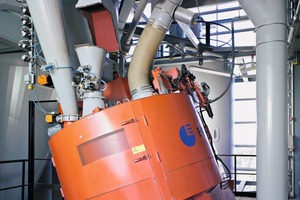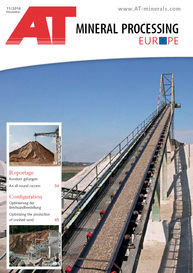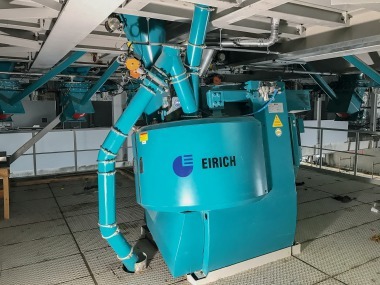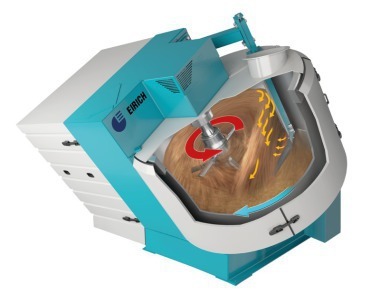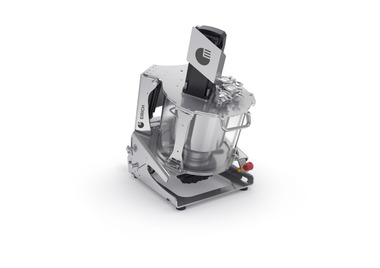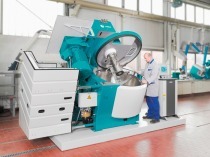Scale-up for mixing of solids
Scaling-up of mixers is a regular requirement when mixes which are developed and tested in the laboratory are needed in larger quantities or when production is to be started after completion of the development phase. A large range of criteria need to be taken into account. Here once again a customer has confirmed that he can transfer formulas developed in a 1-liter mixer to larger EIRICH mixers without any change in quality.
The need to transfer values from a laboratory system to a production system is a regular requirement in every industry (Fig.). Often it is not very easy. When it comes to scaling-up, the volume of the process material increases to the third power but the wall surfaces of the unit only to the second power. In pushing mixers (e.g. ring-trough and planetary mixers) and mechanical mixers (e.g. plowshare mixers), therefore, additional tool sets are required; the power density in the process material changes. In the case of plow-share mixers there is the additional requirement for high-speed choppers to assist with the mixing process and disagglomerate very fine materials, the effect of which, according to the literature, is not scale-up-compatible.
For developers in particular it is desirable for the process to be capable of being transferred to larger units straightforwardly as from a certain (laboratory) mixer size. In such a case it is an advantage if the laboratory mixer is a mixer with a mixing principle which permits upscaling. At first glance it seems surprising that EIRICH customers report that they are able to achieve the same mixing quality in both small and large mixers without any change in the mixing parameters. By way of example, there are manufacturers of dry mortar which prepare small volumes (such as samples of new formulas or subsequent deliveries, including colored plaster) in a 150-liter mixer, and large volumes in a 3000-liter mixer. How is this possible?
The reasons are simple. Due to the design of EIRICH mixers, only a single mixing tool is required for any mixer between 1 l and 3000 l, namely the rotor. The rotating container transports the mix, while all the tool has to do is mix. It requires virtually no contact with the bottom; friction and wear are minimized. The tools can therefore run faster as well if required. In addition: The energy input into the process material can be very precisely defined by means of the type of mixing tool, the tool speeds and the direction of rotation. The parameters vary according to the specific application but, once defined, generally remain unchanged when it comes to upscaling. Within a single revolution of the container, 100 % of the mix is moved by the tool; the mixer therefore mixes without demixing.
The system-immanent characteristics of EIRICH mixing technology therefore enable the process parameters to be easily transferred to production machines; production can usually be started without any further extensive adjustment work. The test centers at all EIRICH sites around the world have mixers available for trials starting in sizes of just 1 l. This enables the diverse possibilities available for mixing, granulating, coating, kneading, and dispersing to be demonstrated to prospective customers.
$(LEhttp://

